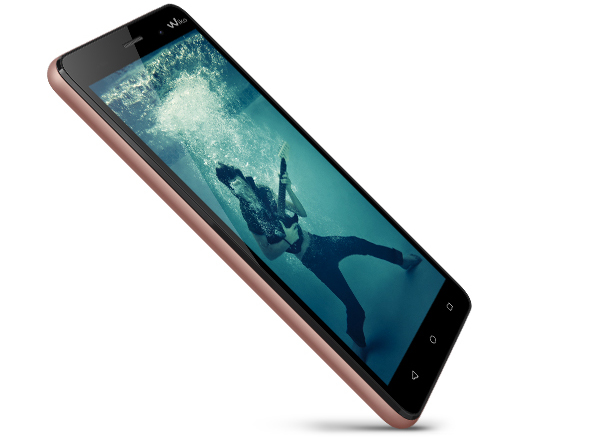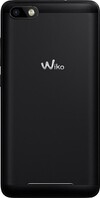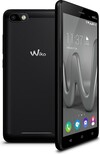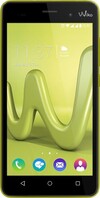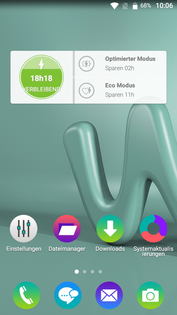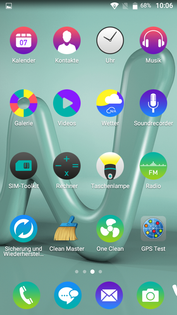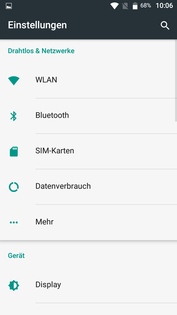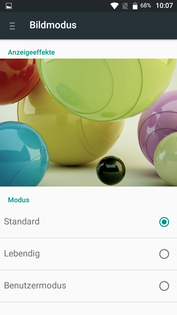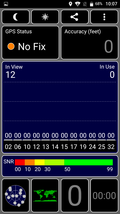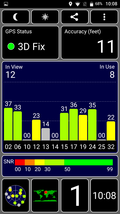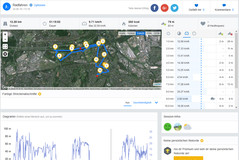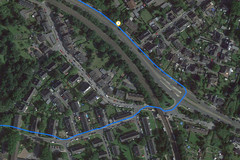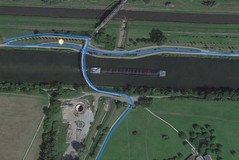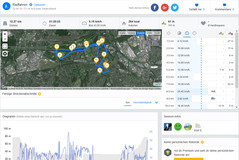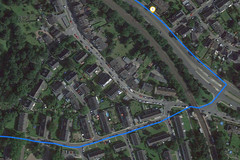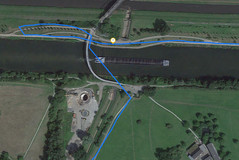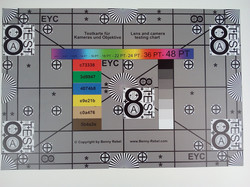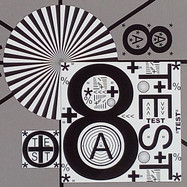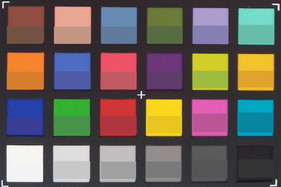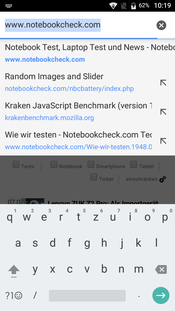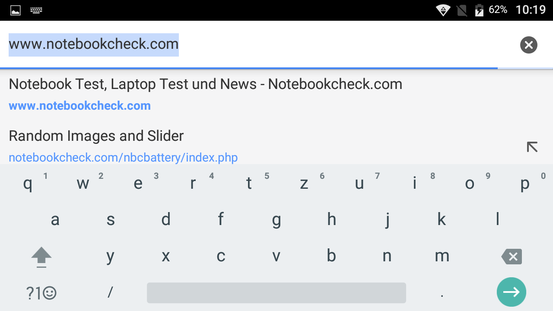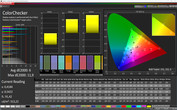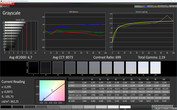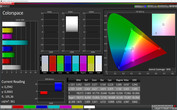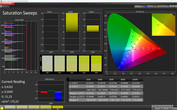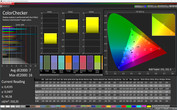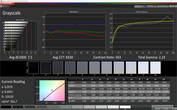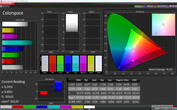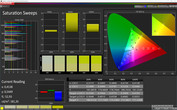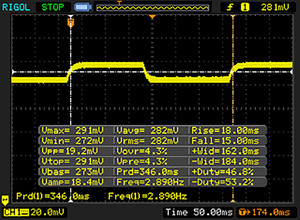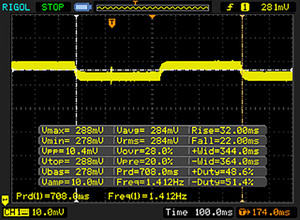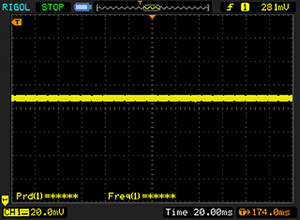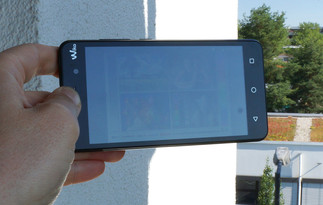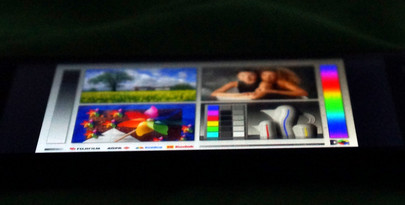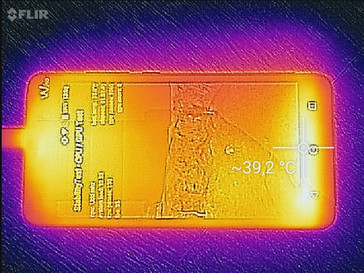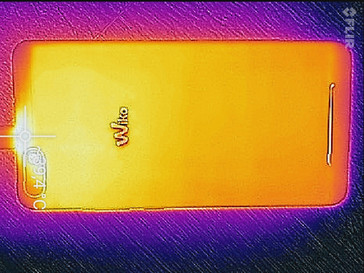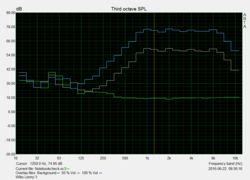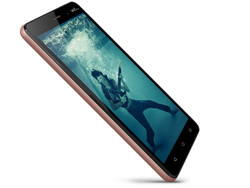Wiko Lenny 3 Smartphone Review
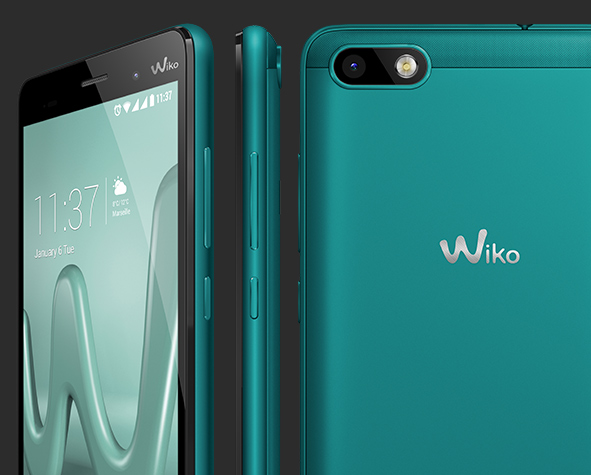
For the original German review, see here.
Wiko claims that their French budget smartphone line, Wiko Lenny, is a success. The test model is the third iteration of this series and costs around 120 Euros (~$132). It has better hardware than its predecessors and a removable metal back cover. The model is available in various appealing colors.
The test model has some stiff competition, such as, the Microsoft Lumia 550, the exotic UHANS S1 and the Xiaomi Redmi 3.
Case
The Wiko Lenny 3 is a heavy 5-inch device. The smartphone has grown bigger. The device is about half a centimeter longer and much wider than its competition. Furthermore, at 9.9 mm (~0.4 in), its thickness is also greater than the comparison models, which have the same screen size. The Lenny weighs in at 177 grams (~0.4 lb).
If you are looking for a feather-light phone, you are going to be disappointed. Despite all this, the Wiko Lenny 3 feels good in the hand, thanks to the rounded corners. According to the manufacturer, the back cover is made of metal. It is quite thin and light and feels cool to the touch. A synthetic material would not have reduced the appeal of the back cover.
The sturdiness is decent for this price tag. Deformations are visible on the screen when a little pressure is applied and the colors change when the case is bent.
Connectivity
The removal of the back cover is no simple operation. Once it is removed, the user has access to two SIM slots (a microSIM and a NanoSIM). Furthermore, there is a microSD card slot, which can support cards up to 64 GB. Apps cannot be put on the card, but it can be used as internal memory once it has been formatted on the smartphone. The files on the card can then be read on the device.
USB OTG is supported and the user can receive UKW radio transmissions.
Software
Wiko has made some cosmetic changes to the standard Android UI (User Interface). Furthermore, the manufacturer has installed a variety of Apps, which limits the free storage space for the user. Thankfully, the phone uses the latest Android version, 6.0, with the security patches from the 1st of May 2016.
Some of the preinstalled Apps are just there for advertisement purposes (DropBox). Others work as system cleaning tools, which can be quite helpful. At the end of the day, most users want to decide for themselves what they want on their device.
Communication & GPS
The Wiko Lenny 3 has no LTE, but it does offer 4 GSM and 3 UMTS frequencies. This means that the user cannot use this device everywhere in the world. In comparison, we see that the competitors offer LTE and offer support for more frequencies.
The WLAN can use the 802.11 b/g/n standards, which means that the 5 GHz bandwidth is not available. The reception is decent. While we were near the router (FritzBox 6490), we had full bars and websites loaded quickly. At a distance of 10 meters (~33 ft), with 3 walls between us and the router, we had half bars and websites loaded noticeably slower.
The Lenny 3 does not perform well in the standardized Wi-Fi test (1 meter distance (~3 ft) from the Linksys EA 8500 router). The Honor 5C reaches higher speeds in this test. High-end devices like the Samsung Galaxy S7 Edge and the Huawei P9 perform even better.
| Wiko Lenny 3 | Honor 5C | Samsung Galaxy S7 Edge | Huawei P9 | |
|---|---|---|---|---|
| Networking | 15% | 533% | 387% | |
| iperf Server (receive) TCP 1 m (MBit/s) | 44.8 | 49.8 11% | 303 576% | 249 456% |
| iperf Client (transmit) TCP 1 m (MBit/s) | 49.2 | 58.3 18% | 290 489% | 205 317% |
The GPS module of our device is not able to locate said device indoors. Thankfully, it can quickly locate the phone outdoors (accuracy of up to 4 meters/~13 ft).
In the practical test, we took the smartphone for a bike ride. The GPS provided reliable results and navigation instructions. We used the professional navigation device, Garmin Edge 500, for comparison and found that the Garmin navigator picked an almost identical route to the Lenny 3. The difference in navigation paths was a mere 10 meters (~33 ft). When riding over the bridge, the GPS had problems accurately calculating the path and simply provided a straight line for navigation. Overall, the GPS module is comfortable and reliable for private use.
Telephone & Speech Quality
Wiko uses the original Google telephone app. The speech quality is fine for this price class, but there are definitely better phones available. The sound is quite dull in the speaker and the microphone cannot filter out the background noises well. If you call a lot, you might want to consider other devices, as they use better components.
Cameras
The back of the Wiko Lenny 3 has an 8 MP camera with auto-focus and LED flash on the back. The camera takes some decent photos. However, large parts of the picture can appear blurry. In weak lighting, the camera needs to use flash to produce good pictures. Videos can be recorded in 1080p. The video quality is good in bright lighting.
The front camera is a 5 MP module, which can take selfies with obvious blurring. The captured colors look good and the details are somewhat clear.
Overall, the cameras of the device are decent in comparison to the competitors: the UHANS S1 or the Xiaomi Redmi 3 have better cameras, while the Microsoft Lumia 550 has lower MPs on its cameras and worse picture quality.
The details and colors of the rear camera were checked against a reference card, which we captured in standard lighting. There are some issues with black text on a red background: the contrast is too low for clear legibility. Slight blurring is visible on the edges of pictures, but clarity is otherwise good.
The colors are over-saturated, but there is no color tinge. White is almost identical to the reference color.
Accessories & Warranty
Wiko has provided an in-ear headset that looks and sounds good. There are no other special accessories. The Lenny 3 has a special "WiCube" cover, which allows users to display data in cubes in a pyramid form. It is a funny idea that costs 20 Euros (~$22).
Wiko offers a 24-month warranty on their devices.
Input Devices & Interface
Display
The 5-inch display of the Lenny 3 is exceptional. The resolution is 1280x720 pixels. The predecessor had a lower resolution of 854x480 pixels. The max brightness will not win any prizes: at its best it reaches 380 cd/m² (361 cd/m² in the APL50 test), which can be surpassed by all competitors. With the sensor turned on, the maximum brightness is far lower.
The illumination is not great at 85% and the brightness differences are clearly visible on large white spaces.
| |||||||||||||||||||||||||
Brightness Distribution: 85 %
Center on Battery: 374 cd/m²
Contrast: 796:1 (Black: 0.47 cd/m²)
ΔE ColorChecker Calman: 6 | ∀{0.5-29.43 Ø4.77}
ΔE Greyscale Calman: 6.7 | ∀{0.09-98 Ø5}
Gamma: 2.19
CCT: 8073 K
| Wiko Lenny 3 IPS, 1280x720, 5" | UHANS S1 IPS, 1280x720, 5" | Microsoft Lumia 550 IPS, 1280x720, 4.7" | Xiaomi Redmi 3 IPS, 1280x720, 5" | |
|---|---|---|---|---|
| Screen | -27% | 9% | 13% | |
| Brightness middle (cd/m²) | 374 | 525 40% | 536 43% | 488.6 31% |
| Brightness (cd/m²) | 343 | 471 37% | 535 56% | 484 41% |
| Brightness Distribution (%) | 85 | 82 -4% | 95 12% | 89 5% |
| Black Level * (cd/m²) | 0.47 | 0.92 -96% | 0.62 -32% | 0.551 -17% |
| Contrast (:1) | 796 | 571 -28% | 865 9% | 887 11% |
| Colorchecker dE 2000 * | 6 | 8.6 -43% | 5.81 3% | 6.5 -8% |
| Colorchecker dE 2000 max. * | 11.9 | 19.4 -63% | 12.3 -3% | |
| Greyscale dE 2000 * | 6.7 | 10.6 -58% | 7.72 -15% | 5 25% |
| Gamma | 2.19 100% | 2.34 94% | 2.18 101% | 2.36 93% |
| CCT | 8073 81% | 9487 69% | 8701 75% | 7677 85% |
* ... smaller is better
At 0.47 cd/m², the black value is very good (same value in the APL50 test). The contrast is also good at 796:1. Overall, the display looks good.
For exact values, we use a spectrometer and the CalMAN tool. We tested the "Standard" and "Lively" settings, which the device offers in its settings. With the "Standard" setting, the colors are not very far from the ideal values from the reference color space. The device has a clear blue tinge, which gets even worse with the "Lively" setting.
The competitors show even greater deviations from the RGB color space, so we have to praise the Lenny 3.
Display Response Times
| ↔ Response Time Black to White | ||
|---|---|---|
| 33 ms ... rise ↗ and fall ↘ combined | ↗ 18 ms rise | |
| ↘ 15 ms fall | ||
| The screen shows slow response rates in our tests and will be unsatisfactory for gamers. In comparison, all tested devices range from 0.1 (minimum) to 240 (maximum) ms. » 89 % of all devices are better. This means that the measured response time is worse than the average of all tested devices (20.2 ms). | ||
| ↔ Response Time 50% Grey to 80% Grey | ||
| 54 ms ... rise ↗ and fall ↘ combined | ↗ 32 ms rise | |
| ↘ 22 ms fall | ||
| The screen shows slow response rates in our tests and will be unsatisfactory for gamers. In comparison, all tested devices range from 0.165 (minimum) to 636 (maximum) ms. » 90 % of all devices are better. This means that the measured response time is worse than the average of all tested devices (31.6 ms). | ||
Screen Flickering / PWM (Pulse-Width Modulation)
| Screen flickering / PWM not detected | |||
In comparison: 53 % of all tested devices do not use PWM to dim the display. If PWM was detected, an average of 8077 (minimum: 5 - maximum: 343500) Hz was measured. | |||
Performance
The device uses the Mediatek MT6580M SoC (System-on-Chip). This is a relatively new chip for cheap smartphones, which offers 4 cores with a clock speed of up to 1.3 GHz. In practical use, we found the chip to provide sufficient performance for navigating the device and surfing the web. Occasional stutters were part of the package. The Lenny 3 is clearly at the bottom end of the performance scale, as shown in the synthetic benchmarks: the Lumia 550 is around the same level (at times ahead and at times behind), while the Xiaomi Redmi 3 and the UHANS S1 are plainly in the lead.
Furthermore, the test model will not be winning any awards for its graphics performance: the Mali-400 MP2 has two processing cores, but does not support modern standards, such as, OpenGL ES 3.0 or 3.1, which means that some tests do not work at all. If the tests do run, the chip cannot offer great performance. Once again, the Lumia 550 can fall behind our test model in terms of graphics performance. However, the other competitors have a lot more to offer.
While surfing the web, the device performs at a similar level: the Lenny 3 can surpass the Microsoft smartphone while loading new websites, but the other competitors can do everything it does and more.
The 16 GB of storage has a slow interface, which reduces the overall score of the Lenny 3 further. In fact, the writing speeds are very low while transferring data. We tested the microSD access with a reference card, the Toshiba Exceria Pro M401, and once again the Lenny 3 falls far behind the speeds available to the microSD card.
| AnTuTu v6 - Total Score (sort by value) | |
| Wiko Lenny 3 | |
| UHANS S1 | |
| Microsoft Lumia 550 | |
| Xiaomi Redmi 3 | |
| Geekbench 3 | |
| 32 Bit Single-Core Score (sort by value) | |
| Wiko Lenny 3 | |
| 32 Bit Multi-Core Score (sort by value) | |
| Wiko Lenny 3 | |
| 3DMark | |
| 1280x720 offscreen Ice Storm Unlimited Score (sort by value) | |
| Wiko Lenny 3 | |
| UHANS S1 | |
| Xiaomi Redmi 3 | |
| 1280x720 offscreen Ice Storm Unlimited Graphics Score (sort by value) | |
| Wiko Lenny 3 | |
| UHANS S1 | |
| Xiaomi Redmi 3 | |
| 1280x720 offscreen Ice Storm Unlimited Physics (sort by value) | |
| Wiko Lenny 3 | |
| UHANS S1 | |
| Xiaomi Redmi 3 | |
| GFXBench (DX / GLBenchmark) 2.7 | |
| T-Rex Onscreen (sort by value) | |
| Wiko Lenny 3 | |
| Microsoft Lumia 550 | |
| 1920x1080 T-Rex Offscreen (sort by value) | |
| Wiko Lenny 3 | |
| Microsoft Lumia 550 | |
| PCMark for Android - Work performance score (sort by value) | |
| Wiko Lenny 3 | |
| UHANS S1 | |
| Xiaomi Redmi 3 | |
| AndroBench 3-5 | |
| Sequential Read 256KB (sort by value) | |
| Wiko Lenny 3 | |
| UHANS S1 | |
| Xiaomi Redmi 3 | |
| Sequential Write 256KB (sort by value) | |
| Wiko Lenny 3 | |
| UHANS S1 | |
| Xiaomi Redmi 3 | |
| Random Read 4KB (sort by value) | |
| Wiko Lenny 3 | |
| UHANS S1 | |
| Xiaomi Redmi 3 | |
| Random Write 4KB (sort by value) | |
| Wiko Lenny 3 | |
| UHANS S1 | |
| Xiaomi Redmi 3 | |
| Sequential Read 256KB SDCard (sort by value) | |
| Wiko Lenny 3 | |
| UHANS S1 | |
| Sequential Write 256KB SDCard (sort by value) | |
| Wiko Lenny 3 | |
| UHANS S1 | |
| Octane V2 - Total Score (sort by value) | |
| Wiko Lenny 3 | |
| UHANS S1 | |
| Microsoft Lumia 550 | |
| Xiaomi Redmi 3 | |
| Mozilla Kraken 1.1 - Total (sort by value) | |
| Wiko Lenny 3 | |
| UHANS S1 | |
| Microsoft Lumia 550 | |
| Xiaomi Redmi 3 | |
| JetStream 1.1 - Total Score (sort by value) | |
| Wiko Lenny 3 | |
| UHANS S1 | |
| Microsoft Lumia 550 | |
| Xiaomi Redmi 3 | |
* ... smaller is better
Games
The phone is known to stutter while running demanding games, such as, the racing game, "Asphalt 8: Airborne". At high settings, the user will also have to expect long load times. The game may run satisfactorily at low settings, but it is not as fun as it is on smartphones that are more powerful. Simpler games, like "Angry Birds", were run on the test model without issues. The touchscreen and position sensor worked flawlessly.
Emissions
Temperature
A maximum case temperature of 37.5 degrees Celsius (~100 Fahrenheit) at load is not bad. The temperatures are tangible but not too high. The case heats up more on the front than on the back. This is ideal, as the user will be holding the phone from behind most of the time. Two spots share the highest temperature of the device: the front top-right and middle.
When idle, the temperatures in the bottom section of the front side are only a little lower. The rest of the device cools off to a greater degree, but the temperatures never drop under 29.8 degrees Celsius (~85 Fahrenheit).
(+) The maximum temperature on the upper side is 37.5 °C / 100 F, compared to the average of 35.2 °C / 95 F, ranging from 21.9 to 247 °C for the class Smartphone.
(+) The bottom heats up to a maximum of 35.6 °C / 96 F, compared to the average of 34 °C / 93 F
(±) In idle usage, the average temperature for the upper side is 33.4 °C / 92 F, compared to the device average of 32.9 °C / 91 F.
Speakers
In the speaker test, "Pink Noise", a straight line wouldbe ideal. This would indicate that all frequencies are played equally strong by the speaker. However, it is unreasonable to expect this of an entry-level phone like the Wiko Lenny 3. The sound is clear, but the high notes are too stressed. Deep notes are barely noticeable. The smartphone is fine for the playback of the occasional song or YouTube video, as the rear speaker offers a max volume of 86 dB(A). Headphone and Bluetooth options will provide better sound.
Energy Management
Power Consumption
The power consumption is average, compared to the competition. However, the UHANS S1 shows that it is possible to consume much less when idle. We like the low consumption of the Lenny 3 while off, which makes it unlikely that the phone will deplete unexpectedly. We found the high consumption of 2.35 W while idling much worse. At load, the device can need up to 5.35 W, which is a very high value.
| Off / Standby | |
| Idle | |
| Load |
|
Key:
min: | |
| Wiko Lenny 3 2000 mAh | Microsoft Lumia 550 2100 mAh | UHANS S1 2200 mAh | |
|---|---|---|---|
| Power Consumption | 3% | 22% | |
| Idle Minimum * (Watt) | 0.76 | 0.55 28% | 0.7 8% |
| Idle Average * (Watt) | 2.16 | 2.69 -25% | 1.13 48% |
| Idle Maximum * (Watt) | 2.35 | 2.93 -25% | 1.25 47% |
| Load Average * (Watt) | 4.65 | 3.94 15% | 4.39 6% |
| Load Maximum * (Watt) | 5.35 | 4.24 21% | 5.43 -1% |
* ... smaller is better
Battery Life
Although, in comparison to the competitors, the Wiko Lenny 3 has a relatively low battery capacity of 2,000 mAh or 7.4 Wh, the device can last quite long. In the practical WLAN test, our test model could not match the Xiaomi Redmi 3, with its giant battery. However, it surpasses the Lumia 550 and the UHANS S1 by a clear margin.
| Wiko Lenny 3 2000 mAh | Microsoft Lumia 550 2100 mAh | Xiaomi Redmi 3 4100 mAh | UHANS S1 2200 mAh | |
|---|---|---|---|---|
| Battery runtime | -9% | 99% | -43% | |
| Reader / Idle (h) | 15.7 | 17.1 9% | 41.4 164% | |
| WiFi v1.3 (h) | 9.2 | 7.4 -20% | 13 41% | 5.2 -43% |
| Load (h) | 2.6 | 2.2 -15% | 5 92% | |
| H.264 (h) | 6.9 |
Pros
Cons
Verdict
How much should you expect from a smartphone that costs 129 Euros (~$142, even lower on the Internet)? Well the fact is the French manufacturer has produced a strong successor to the Lenny 2. However, this was a necessary step to remain competitive in this segment, as all other entry-level smartphones have upped their game as well.
The panel has good colors, but should be brighter. The weight and measurements are above average, despite the relatively small battery size. The metal rear cover offers more marketing value than practical benefits and the device does not support LTE.
The Wiko Lenny 3 can keep up with most of the competition. However, it is lacking in performance. Furthermore, the competition out of Asia is especially strong.
The Wiko Lenny 3 is a good entry-level smartphone that is appealing but with limitations. Buyers may find the various rear cover colors entertaining. At the same time, it is clear that the performance deficit can be a major factor for users. At the end of the day, the buyer will receive a device with a decent camera and good battery life.
Wiko Lenny 3
- 07/13/2016 v5.1 (old)
Florian Wimmer


